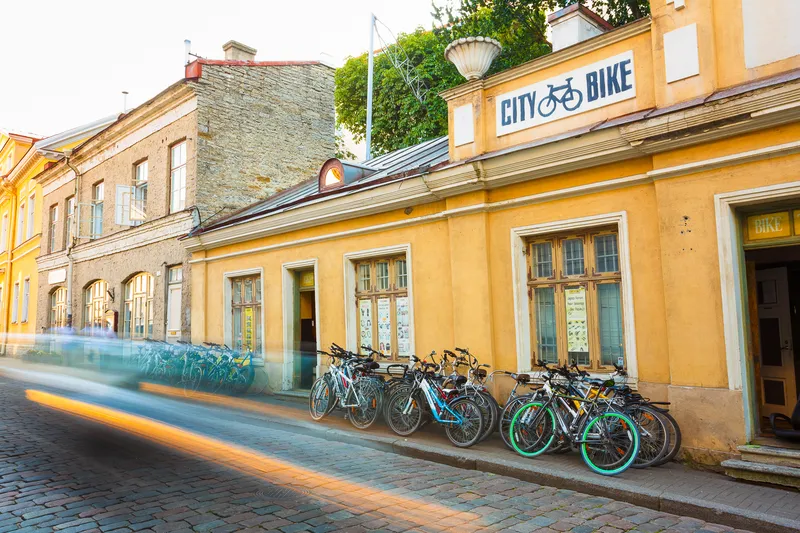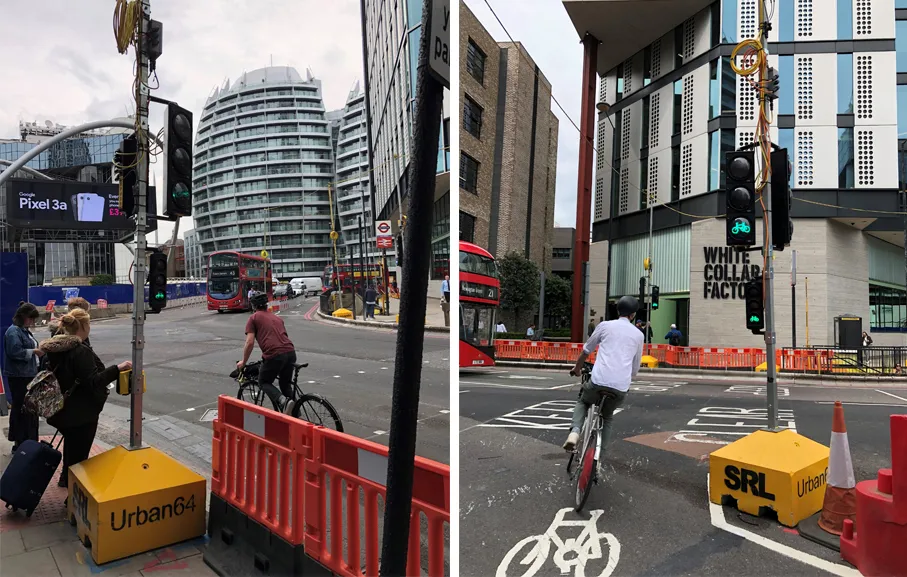A research study released by the US National Institute for Transportation and Communities (NITC) program offers the most comprehensive evaluation of protected cycle lanes to date. The study, Lessons from the Green Lanes, examines recently installed protected bike lanes in five of the six founding PeopleForBikes Green Lane Project cities and provides the scientific basis for decisions that could improve bicycling in cities across the United States.
Protected bike lanes, sometimes called cycle tracks, are
June 6, 2014
Read time: 3 mins
A research study released by the US National Institute for Transportation and Communities (NITC) program offers the most comprehensive evaluation of protected cycle lanes to date. The study, Lessons from the Green Lanes, examines recently installed protected bike lanes in five of the six founding PeopleForBikes Green Lane Project cities and provides the scientific basis for decisions that could improve bicycling in cities across the United States.
Protected bike lanes, sometimes called cycle tracks, are on-street lanes separated from traffic by kerbs, planters, parked cars or posts to help organise the street and make riding a bike appealing for people of all ages and abilities. Because protected bike lanes are relatively new to the US, little academic research has existed to help leaders evaluate the risks and rewards of the investment in putting the facilities on the ground.
Researchers visited each of the five participating cities — Austin, Texas; Chicago; Portland, Oregon; San Francisco; and Washington, DC — and selected one to two protected bike lanes to study in each city. They set up cameras at two to three locations on each protected lane to gather data including bicycle counts and conflicts. They analysed 168 hours of video where 16,393 bicyclists and 19,724 turning and merging vehicles were observed.
Cyclists said it feels safer to bicycle on the new facilities and all categories of road users said the safety of cycling on the street had increased. Perceptions of the effect on the safety of walking and driving on the street were mixed.
In the 144 hours of video analysed for safety, with nearly 12,900 bicycles through the intersections, no collisions or near collisions were observed. This included both intersections with turn lanes and those with bicycle-specific traffic signals.
Overall, large majorities of all road users supported adding more protected lanes. Of people living near protected bike lanes, 76 per cent support adding the lanes in additional locations, whether they use them or not.
Researchers found that people understand how to use the new protected lanes and what to do at intersections. Because the studied cities took different approaches to intersections, where automobiles and bicycles mix, the response of road users varied. Still, large majorities of cyclists felt safe going through all types of intersection design.
This study provides definitive evidence that people feel safe riding in protected lanes and that people travelling by car or foot also support building more protected lanes to separate bicycles and automobiles. It also provides insight on the safety, use and economic effect of protected lanes.
“This study fills a critical gap in the research and can influence national guidance on protected bike lanes,” said research team leader Christopher Monsere said. “Policymakers can look to this research to see how they could best use protected bike lanes to meet their mobility, safety and economic goals.”
Protected bike lanes, sometimes called cycle tracks, are on-street lanes separated from traffic by kerbs, planters, parked cars or posts to help organise the street and make riding a bike appealing for people of all ages and abilities. Because protected bike lanes are relatively new to the US, little academic research has existed to help leaders evaluate the risks and rewards of the investment in putting the facilities on the ground.
Researchers visited each of the five participating cities — Austin, Texas; Chicago; Portland, Oregon; San Francisco; and Washington, DC — and selected one to two protected bike lanes to study in each city. They set up cameras at two to three locations on each protected lane to gather data including bicycle counts and conflicts. They analysed 168 hours of video where 16,393 bicyclists and 19,724 turning and merging vehicles were observed.
Cyclists said it feels safer to bicycle on the new facilities and all categories of road users said the safety of cycling on the street had increased. Perceptions of the effect on the safety of walking and driving on the street were mixed.
In the 144 hours of video analysed for safety, with nearly 12,900 bicycles through the intersections, no collisions or near collisions were observed. This included both intersections with turn lanes and those with bicycle-specific traffic signals.
Overall, large majorities of all road users supported adding more protected lanes. Of people living near protected bike lanes, 76 per cent support adding the lanes in additional locations, whether they use them or not.
Researchers found that people understand how to use the new protected lanes and what to do at intersections. Because the studied cities took different approaches to intersections, where automobiles and bicycles mix, the response of road users varied. Still, large majorities of cyclists felt safe going through all types of intersection design.
This study provides definitive evidence that people feel safe riding in protected lanes and that people travelling by car or foot also support building more protected lanes to separate bicycles and automobiles. It also provides insight on the safety, use and economic effect of protected lanes.
“This study fills a critical gap in the research and can influence national guidance on protected bike lanes,” said research team leader Christopher Monsere said. “Policymakers can look to this research to see how they could best use protected bike lanes to meet their mobility, safety and economic goals.”










